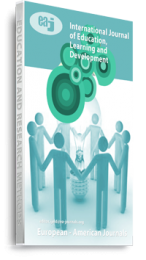The study was The study aimed at Quantitative and Qualitative Analysis of Dyscalculia Test. Triangulation research design was employed in this study. The study was driven by three research questions. The study’s population included all 4,758,800 pupils in Nigeria’s upper elementary and junior secondary institutions in Nigeria. A total of 2340 students were randomly selected using a multistage sampling procedure. The data for the study was the Dyscalculia Test. Expert judgement and empirical evidence of factor analysis were used to establish the instruments’ face, content, and construct validity. Split half Technique was used to ensure the instrument reliability The split-half reliability study for the Dyscalculia Test indicates that the first half of the test has a reliability estimate of.894 and the second half of the test has a reliability estimate of.780. Spearman-coefficient Brown’s of.824 was used to evaluate the whole test’s reliability. Research questions were answered using Mantel-Haenzel Statistics, Analysis of Variance (three way) number count, percentage and qualitative description. Result on analysis revealed that examinees performance on Dyscalculia Test is independent of ethnicity, i.e all the Dyscalculia test items are not bias towards any ethnic group in Nigeria. There is no significant influence of age, gender and educational level on the Dyscalculia Test .Also, the interaction influence of Ethnicity and gender, Ethnicity and educational level, gender and educational level and then Ethnicity, gender and Educational Level on Dyscalculia Test which were all not significant. Also, Respondents who took the Dyscalculia Test are classified as those that are severely Dyscalculic, Moderately Dyscalculic, Mildly Dyscalculic and those with No Dyscalculia. It was recommended based on findings that assessment instruments used within the school system be it at primary, secondary or higher institutions should be subjected to the DIF analysis for bias item analysis as this would provide the necessary statistical evidence that a particular assessment instrument is not bias
Citation: Stella Ogbogo and I. M Opara (2021) Quantitative and Qualitative Analysis of Dyscalculia Test, International Journal of Education, Learning and Development, Vol. 9, No.7, pp.1-15
Keywords: Classification, DIF, Description, Dyscalculia, Test, item bia

